While it’s a bit tricky to make traditional black or green tea at home from the Camellia sinensis plant, herbal teas are super beginner-friendly.
The best part?
You can easily grow these herbs right at home, giving you a chance to explore lots of flavors whenever you want.
What’s really cool is that apart from being yummy and refreshing, herbal teas might actually be good for your health too!
They could help boost your immune system and even make it easier for you to fall asleep.
So yeah, whether you’re sipping a cozy cup in the evening or trying to stay healthy, herbal teas are the way to go!
But how to brew herbal tea? And most importantly, how many herbal teas are there for you to enjoy and seek their benefits?
I’ll decode it all and much more in this post!
What Is Herbal Tea or Tisane?
Herbal tea or tisane is a soothing and flavorful drink made from parts of plants like dried leaves, flowers, roots, and sometimes even fruits and spices.
It’s a bit different from regular tea, like black or green tea, because it doesn’t come from the tea plant.
To make herbal tea, you take these plant parts and steep them in hot water.
Steeping means you let them sit in the hot water for a few minutes so their flavors and beneficial properties can be infused into the water.
The neat thing is that you can use various parts of plants to make herbal tea.
For example, if you’re using leaves, you might pluck some mint leaves, chamomile flowers, or nettle leaves.
If you’re feeling adventurous, you can also use parts like cinnamon sticks, ginger roots, or hibiscus flowers.
It’s like making a special mix of flavors and wellness benefits.
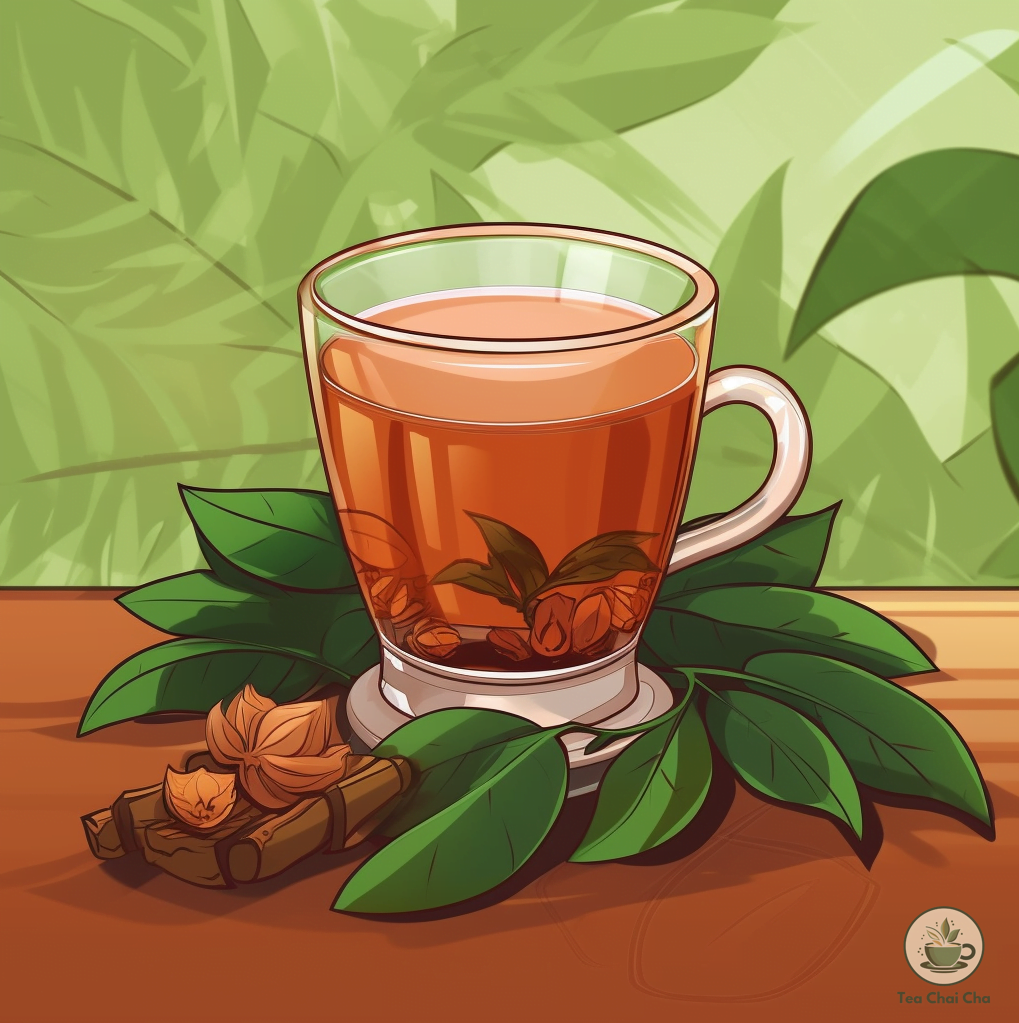
Herbal Tea and History
In the past, people used herbal tea for various reasons, mainly because they believed that different plants held special properties that could help with different health concerns.
Since they didn’t have modern medicine like we do today, they turned to the plants around them for solutions.
Herbal tea was often used for its potential healing effects.
For example, some plants were thought to soothe an upset stomach, calm nerves, or help with sleep troubles.
Others were believed to have antibacterial or anti-inflammatory properties, which could be helpful when someone was feeling under the weather.
People would often share their knowledge about these plants and their benefits, passing down recipes and remedies from generation to generation.
Beyond the potential health benefits, herbal tea was also a way for communities to come together.
Sharing a cup of herbal tea provided a chance for people to relax, chat, and enjoy each other’s company.
It was a comforting ritual that brought a sense of connection and warmth to daily life.
What You Need to Make Herbal Tea
Let’s talk about what you’ll need to make a soothing cup of herbal tea.
Here are the basics that you can choose from:
- Herbal Tea Blend
Start by picking a herbal tea blend that suits your taste and purpose.
There are many options available, such as chamomile for relaxation, peppermint for digestion, or lavender for calming.
You can find these blends pre-packaged at stores or make your own by mixing different dried herbs.
- Dried Herbs
If you want to create your own herbal blend, you’ll need dried herbs.
You can find these at health food stores or online.
Make sure to choose herbs that are safe for consumption and appealing to your senses.
- Tea Infuser or Strainer
To steep the dried herbs or tea blend, you’ll need a tea infuser or a strainer.
These come in various shapes and sizes.
Just put the herbs in the infuser or strainer, place it in your cup, and pour hot water over it.
- Boiling Water (100°C / 212°F)
For most herbal teas, using boiling water is just right.
It helps to extract the flavors and beneficial compounds from the herbs.
So, once your water reaches a rolling boil, you’re good to go.
Pour it over your chosen herbs and let them steep.
- Cooler Water (85-95°C / 185-203°F)
However, some delicate herbs, like chamomile and hibiscus, can benefit from slightly cooler water.
Let the water sit for a minute or two after boiling before pouring it over these herbs.
This gentler approach helps prevent any bitter notes.
- Mug or Teapot
Choose a mug or teapot to brew your herbal tea.
It should be large enough to hold the water and the infuser or strainer comfortably.
- Sweeteners (Optional)
If you like your tea a bit sweet, consider having some honey, sugar, or a natural sweetener like stevia on hand.
Add these to taste after your tea has steeped.
- Lemon or Citrus (Optional)
For an extra twist of flavor, you might want to keep a lemon or other citrus fruit on hand.
A squeeze of lemon can brighten up the taste of your herbal tea.
- Timer
It’s handy to have a timer to keep track of how long you’re steeping your herbal tea.
Steeping times can vary depending on the herbs you’re using.

How to Make Herbal Tea – Step-by-Step Guide
Here’s your step-by-step guide to brew herbal tea using tea sachets and loose herbal tea:
Step 1: Choose Your Herbal Ingredients
When it comes to making herbal tea, the first step is selecting the herbal ingredients that will create the flavors and benefits you desire.
You have a few options to consider:
Option A: Herbal Sachets
If you prefer convenience and less mess, herbal sachets are a great choice.
These are small bags filled with a blend of dried herbs.
You can find pre-made sachets in stores or create your own by filling empty tea bags with your chosen herbs.
This option is perfect if you’re always on the go or want a quick cup of herbal tea.
Option B: Loose Leaf Herbal Tea
For those who enjoy a more customizable experience, loose leaf herbal tea is fantastic.
This involves using loose, dried herbs directly in your tea-making process.
You can mix and match different herbs to create your unique blend and adjust the quantity to your taste.
This option provides a more immersive tea-making experience and lets you experiment with flavors.
Step 2: Prepare Your Equipment
Regardless of whether you choose herbal sachets or loose leaf tea, you’ll need some basic equipment:
- A teapot or teacup
- A kettle or pot for boiling water
- A strainer (if using loose leaf herbs)
Having your equipment ready will make the process smoother and more enjoyable.
Step 3: Boil Fresh Water
High-quality water is essential for a delicious cup of herbal tea. Start by boiling fresh, cold water.
Avoid using water that’s been sitting around or has been reheated.
The temperature of the water depends on the type of herbs you’re using.
Generally, around 200°F (93°C) is suitable for most herbs.
Step 4: Herbal Sachets
If you’re using herbal sachets:
- Place a sachet in your teacup or teapot.
- Pour the hot water over the sachet.
- Let it steep for the recommended time, usually around 5-7 minutes.
- Gently press the sachet with a spoon to release any remaining flavors.
- Remove the sachet and enjoy your herbal tea!
Step 5: Loose Leaf Herbal Tea
If you’re using loose leaf herbs:
- Add your chosen herbs to a tea infuser or directly to the teapot.
- Pour the hot water over the herbs.
- Cover the teapot and let it steep for the recommended time. This can vary based on the herbs used.
- Place a strainer over your teacup and carefully pour the tea to catch the leaves.
- Savor your freshly brewed herbal tea!
Step 6: Sweeten and Enhance (Optional)
You can enhance the flavor of your herbal tea by adding a touch of honey, lemon, or a cinnamon stick.
Experiment to find your perfect combination.
Step 7: Relax and Enjoy
Find a cozy spot, take a deep breath, and enjoy your homemade herbal tea.
Whether you chose herbal sachets or loose leaf herbs, your cup of tea is now a warm and comforting reality.
22 Different Herbal Teas to Try!
Herbal teas come in a vast array of flavors, aromas, and potential health benefits, all stemming from the diverse world of plants.
Here’s a brief description on different herbal teas to have an idea:
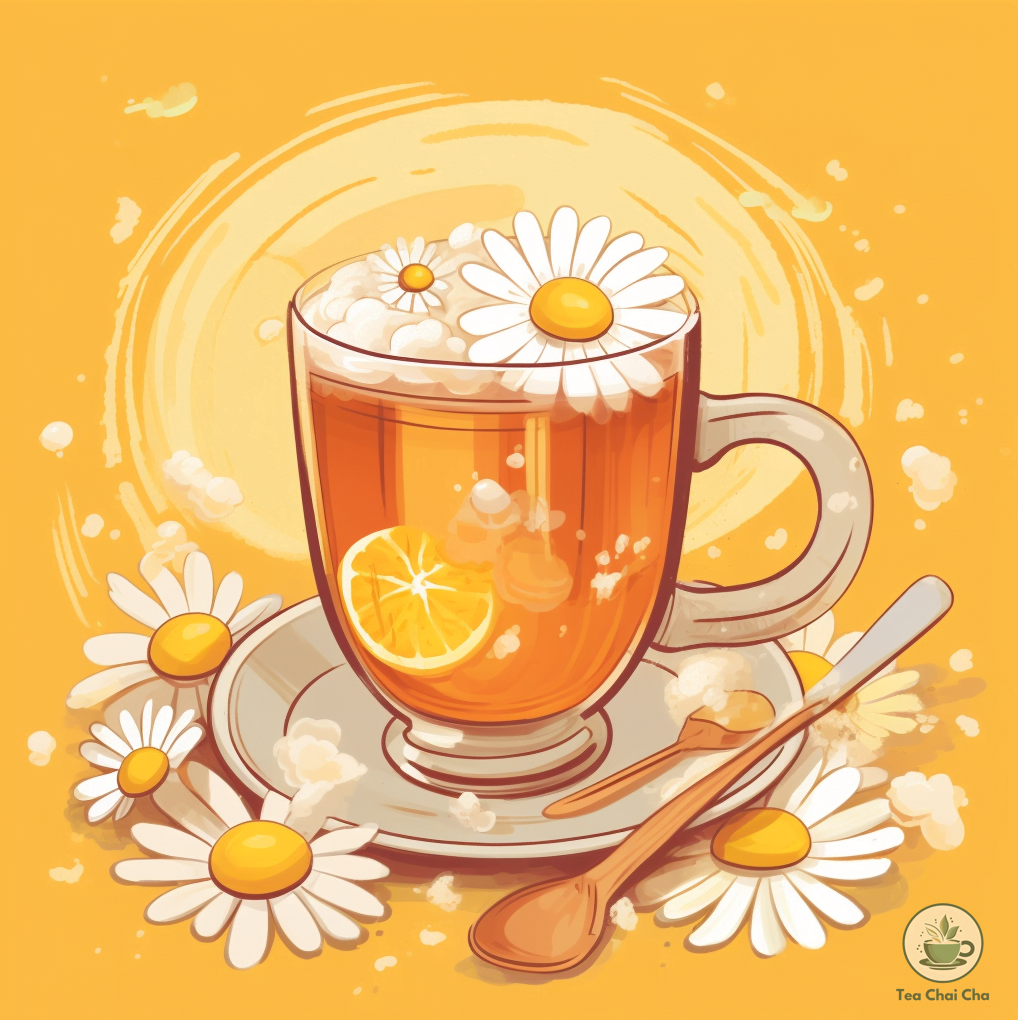
1. Chamomile Tea
- Origin: Derived from the chamomile flower, commonly found in Europe and Asia.
- Taste: Mild and soothing with a subtle floral and slightly sweet flavor.
- Characteristics: Known for its calming properties, often used to promote relaxation and aid in sleep.
Related – How to Make Chamomile Tea with Fresh/Dried Flowers, Tea Bags
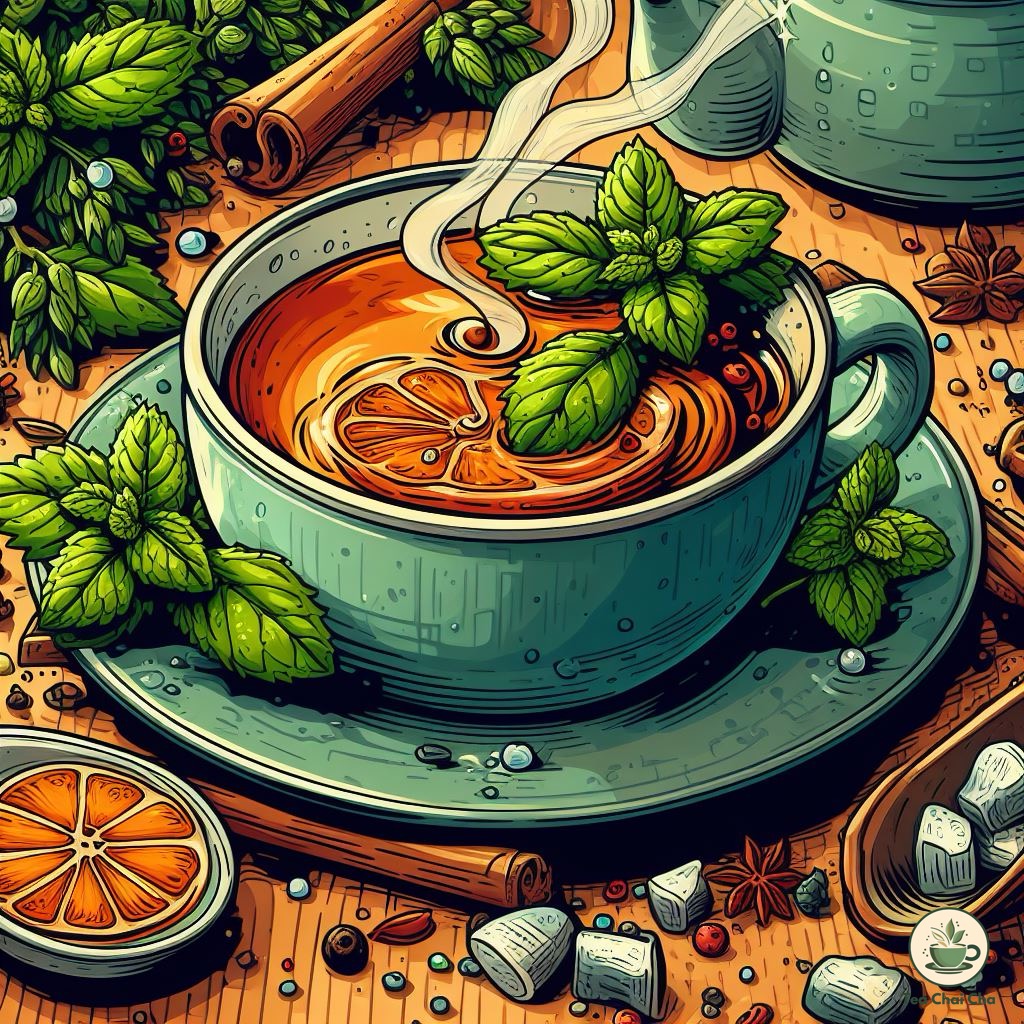
2. Peppermint Tea
- Origin: Made from peppermint leaves, a cross between spearmint and watermint.
- Taste: Refreshing and minty, with a cooling sensation.
- Characteristics: Known for aiding digestion, providing a burst of energy, and soothing upset stomachs.
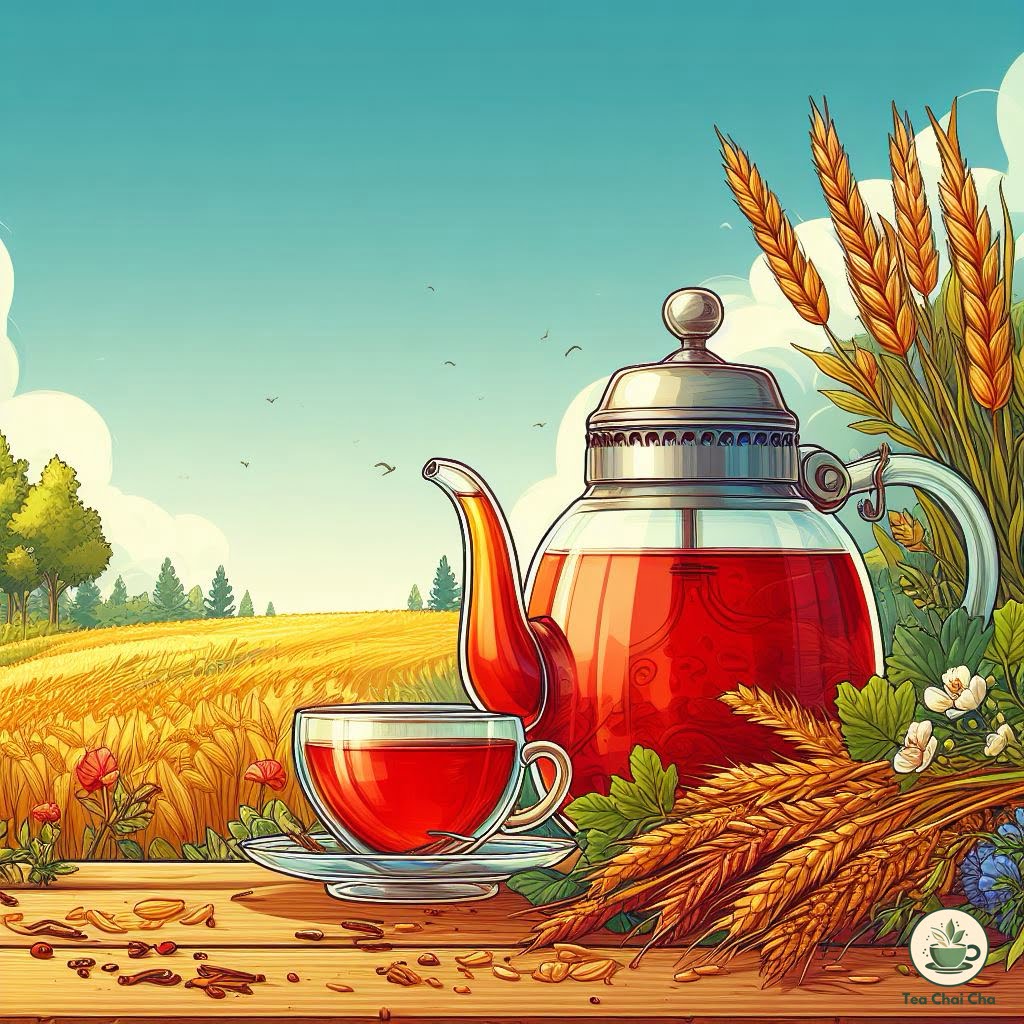
3. Rooibos Tea
- Origin: Comes from the leaves of the South African rooibos plant.
- Taste: Naturally sweet and nutty, with hints of vanilla.
- Characteristics: Caffeine-free, rich in antioxidants, and often enjoyed for its soothing qualities.

4. Hibiscus Tea
- Origin: Made from dried hibiscus flowers, popular in various cultures.
- Taste: Tangy and tart, sometimes with a hint of berry-like flavors.
- Characteristics: Vibrant red color, rich in vitamin C, and known for its potential to support heart health.
Related – How to Make Hibiscus Tea – Benefits, Variations, Food Pairing
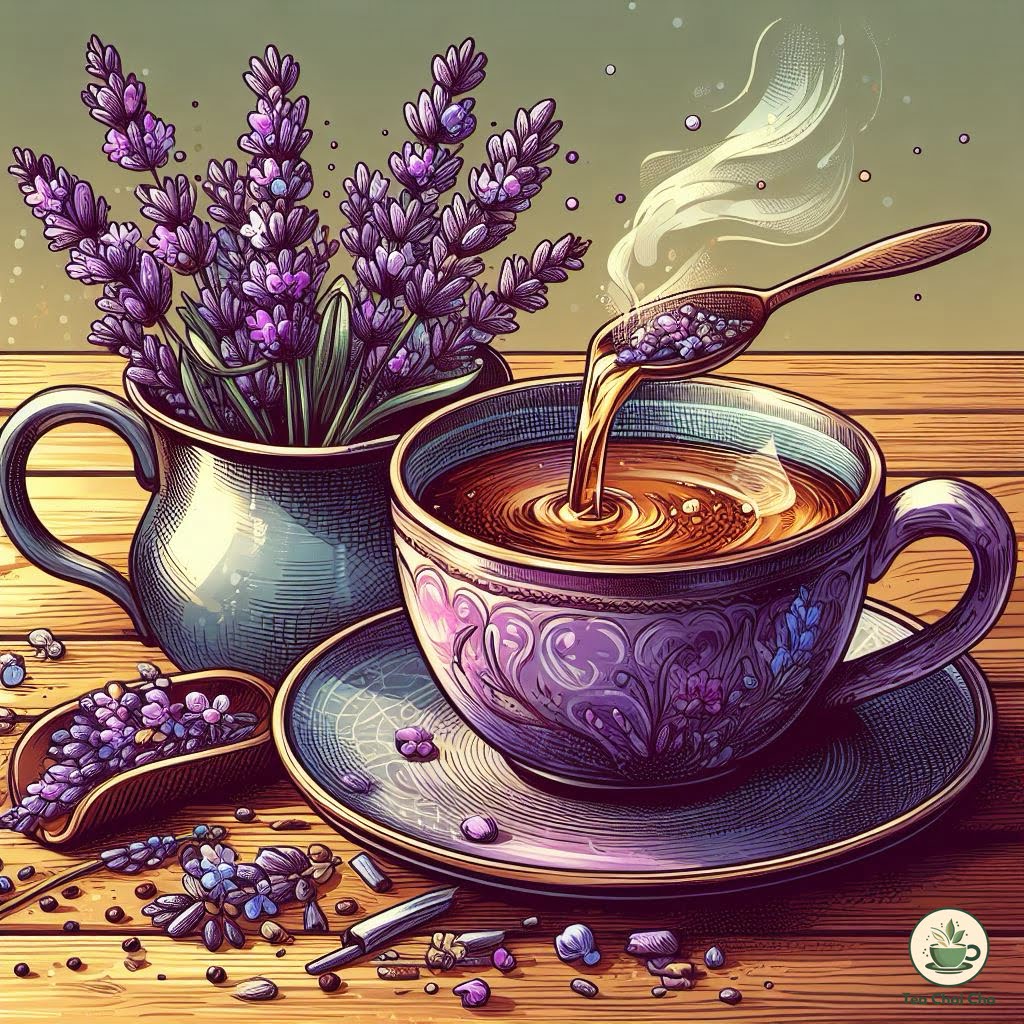
5. Lavender Tea
- Origin: Created by steeping dried lavender buds.
- Taste: Delicate and floral, with a soothing aroma.
- Characteristics: Often used to relax and unwind, known for its calming effects on the mind and body.
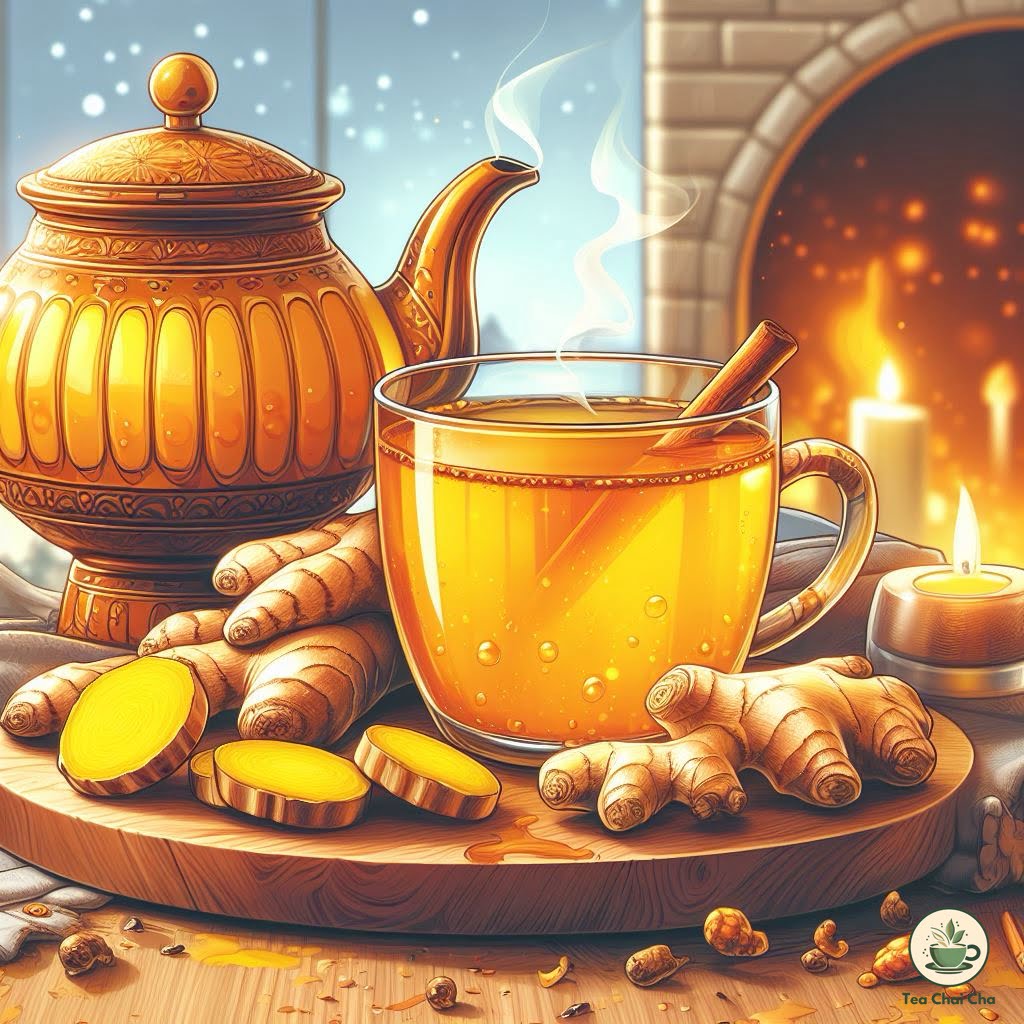
6. Ginger Tea
- Origin: Made from ginger root, a common spice in Asian cuisine.
- Taste: Spicy, warming, and slightly zesty.
- Characteristics: Known for its potential to alleviate nausea, improve digestion, and boost the immune system.
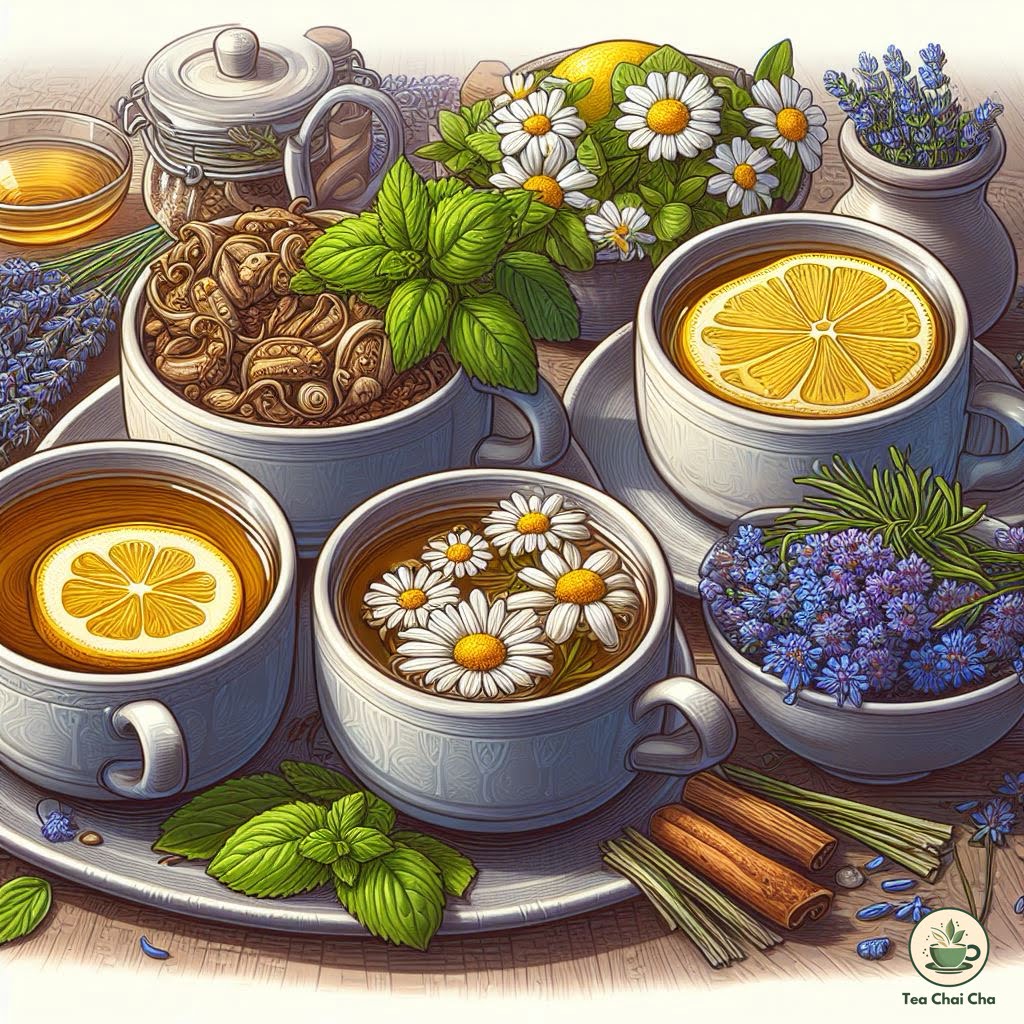
7. Lemon Balm Tea
- Origin: Produced by steeping lemon balm leaves.
- Taste: Citrusy and mildly sweet, reminiscent of lemon.
- Characteristics: Often used to promote relaxation, reduce stress, and support better sleep.
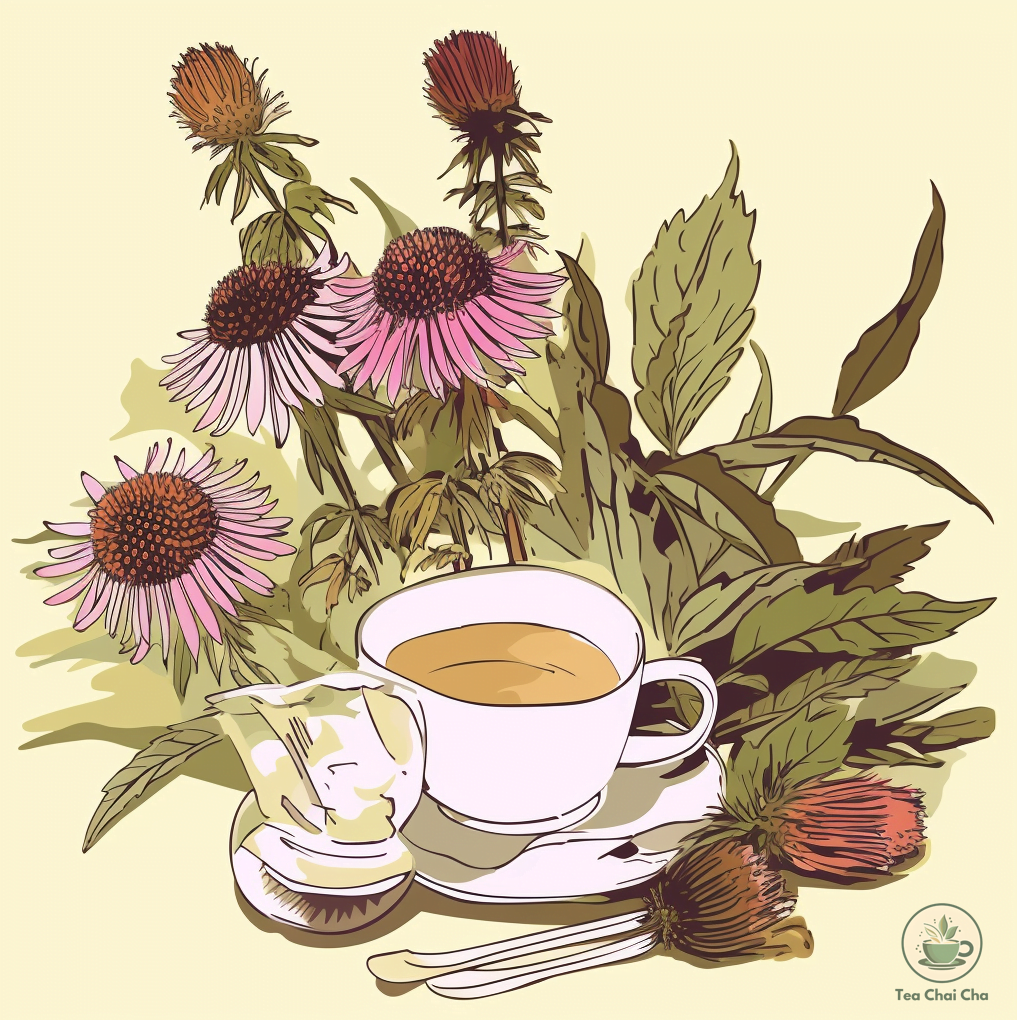
8. Echinacea Tea
- Origin: Derived from the echinacea plant, native to North America.
- Taste: Earthy with a hint of bitterness.
Characteristics: Often consumed to potentially boost the immune system and alleviate cold symptoms.
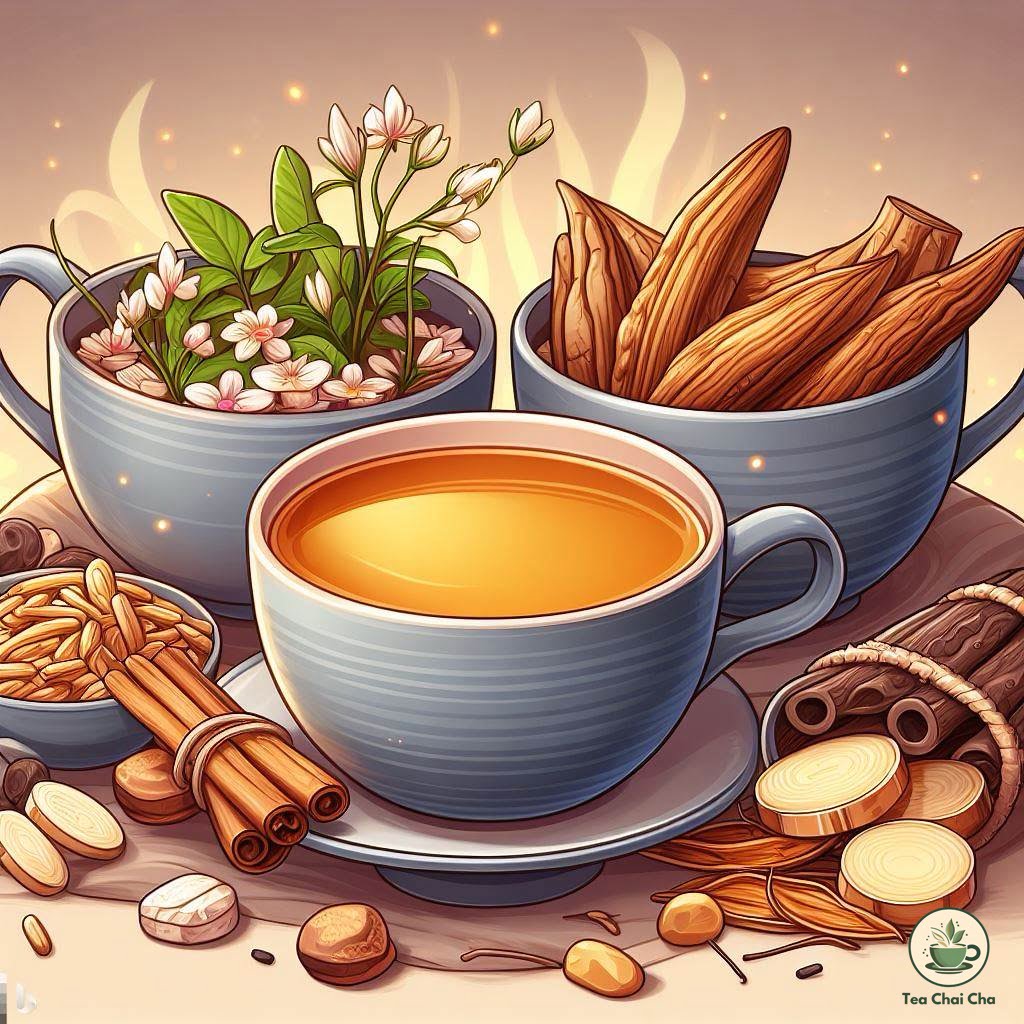
9. Licorice Root Tea
- Origin: Made from the root of the licorice plant.
- Taste: Sweet and woody, similar to the flavor of black licorice candy.
- Characteristics: Can have soothing effects on the throat and may aid in digestive comfort.
10. Lemongrass Tea
- Origin: Commonly used in Asian cuisine, made from lemongrass stalks.
- Taste: Fresh, citrusy, and slightly tangy.
- Characteristics: Known for its potential to aid digestion and provide a refreshing flavor.
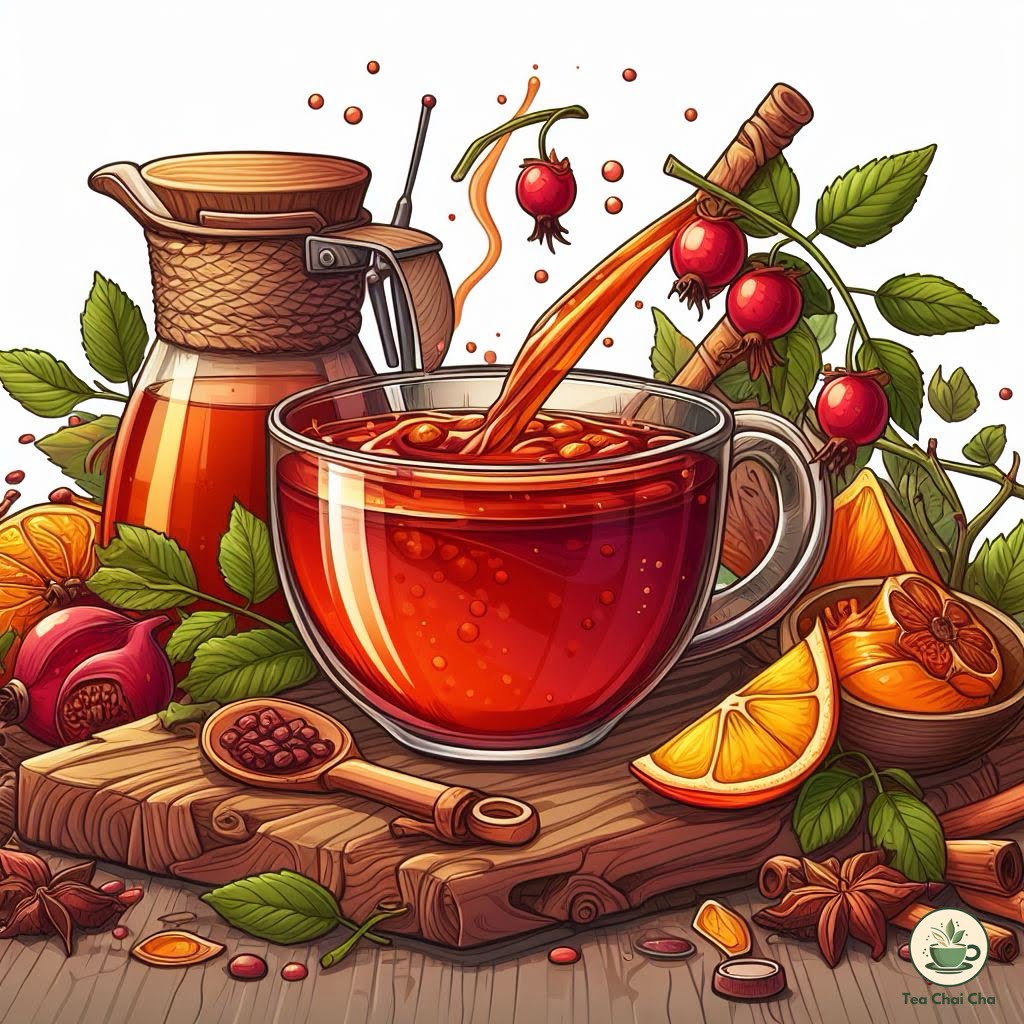
11. Rosehip Tea
- Origin: Created from the fruit of wild rose plants.
- Taste: Tart and slightly sweet.
- Characteristics: Packed with vitamin C and antioxidants, often enjoyed for immune support.
12. Nettle Tea
- Origin: Made from stinging nettle leaves, native to Europe and Asia.
- Taste: Earthy and herbal, similar to a mild green tea.
- Characteristics: Rich in nutrients, often used to potentially relieve allergies and support joint health.
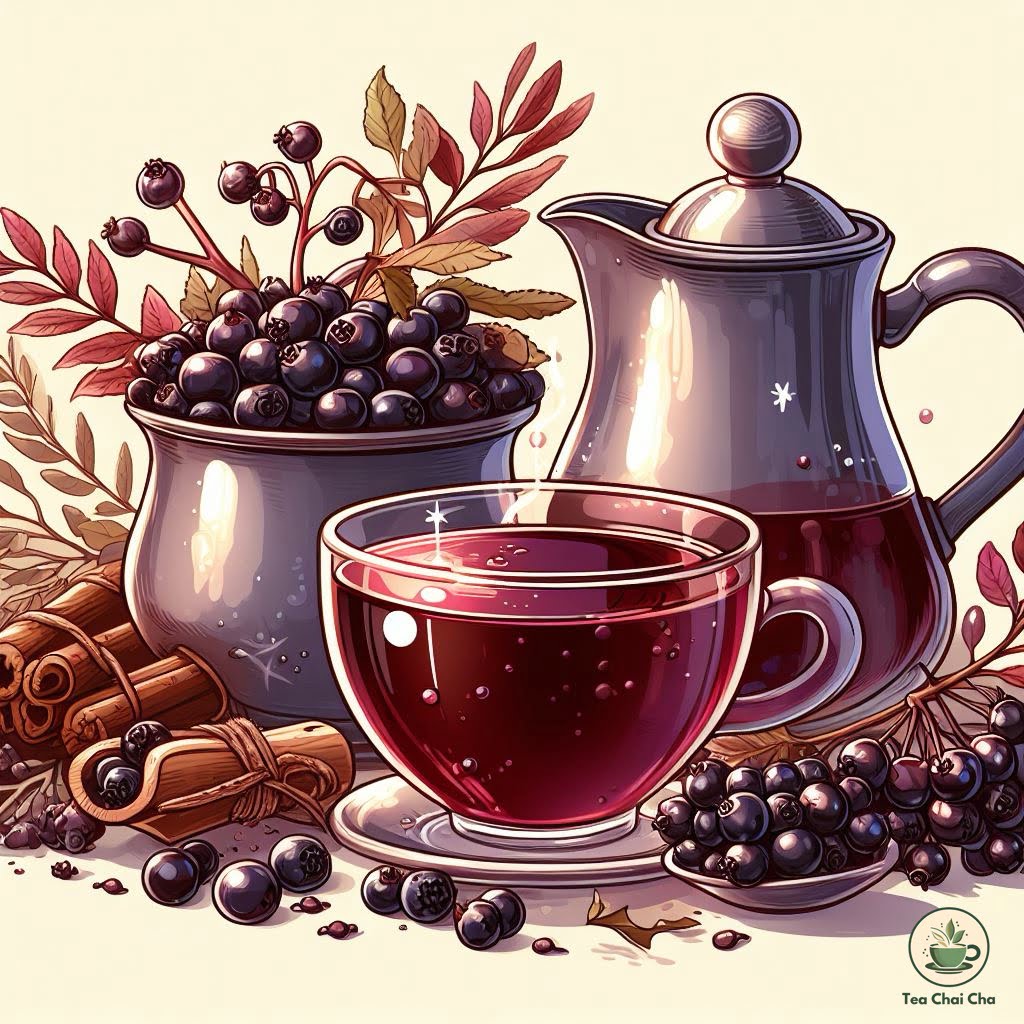
13. Elderberry Tea
- Origin: Derived from elderberry fruits.
- Taste: Sweet and fruity.
- Characteristics: Noted for potential immune-boosting properties and rich in antioxidants.
14. Cinnamon Tea
- Origin: Made from cinnamon bark.
- Taste: Warm, spicy, and slightly sweet.
- Characteristics: Known for its potential to support blood sugar regulation and add a comforting aroma.
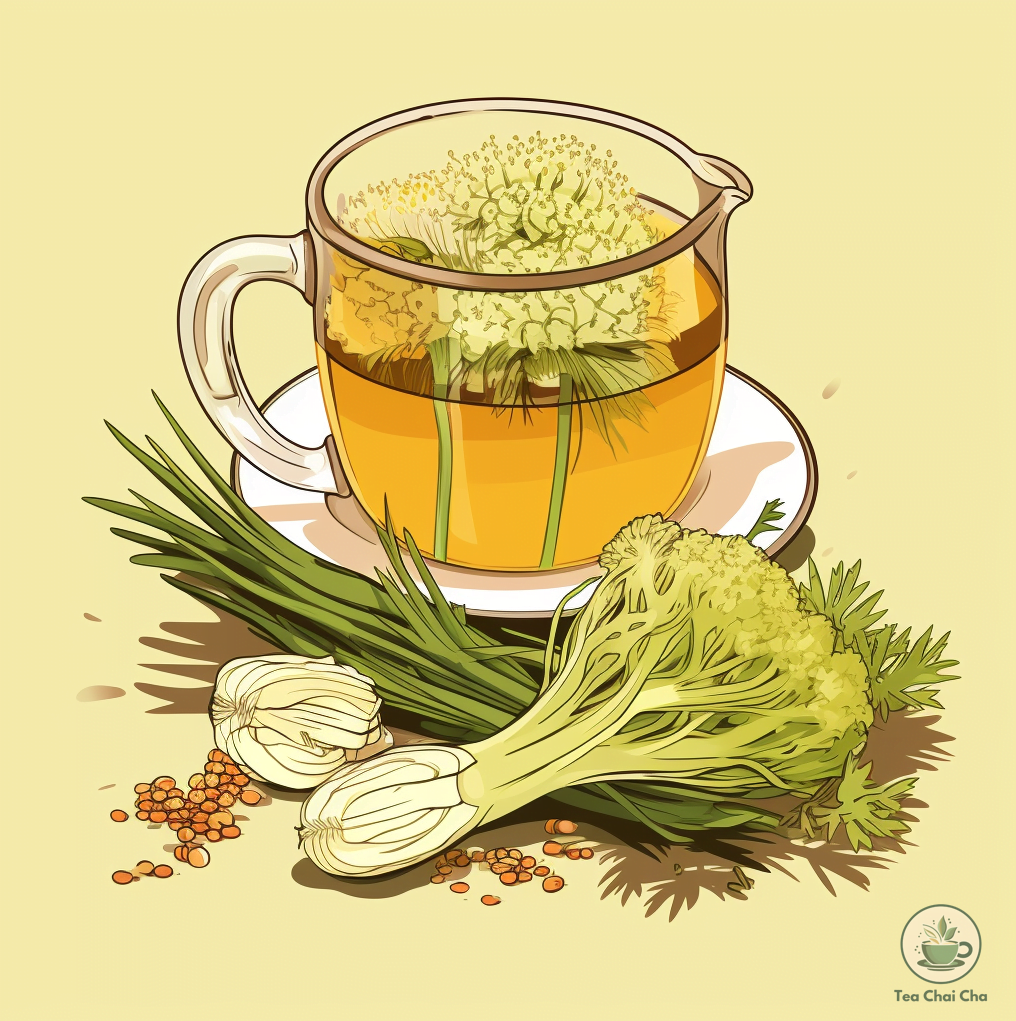
15. Fennel Tea
- Origin: Created from the seeds of the fennel plant.
- Taste: Mildly sweet with a hint of anise-like flavor.
- Characteristics: Often consumed for potential digestive benefits and to freshen breath.
16. Chai Spice Herbal Tea
- Origin: A blend of various spices, including cinnamon, cardamom, cloves, and ginger.
- Taste: Rich, warm, and aromatic, often enjoyed with milk and sweetener.
- Characteristics: Known for its warming qualities and unique spice blend.
17. Valerian Root Tea
- Origin: Made from the valerian plant’s root.
- Taste: Earthy and somewhat bitter.
- Characteristics: Often used to promote relaxation and support better sleep.
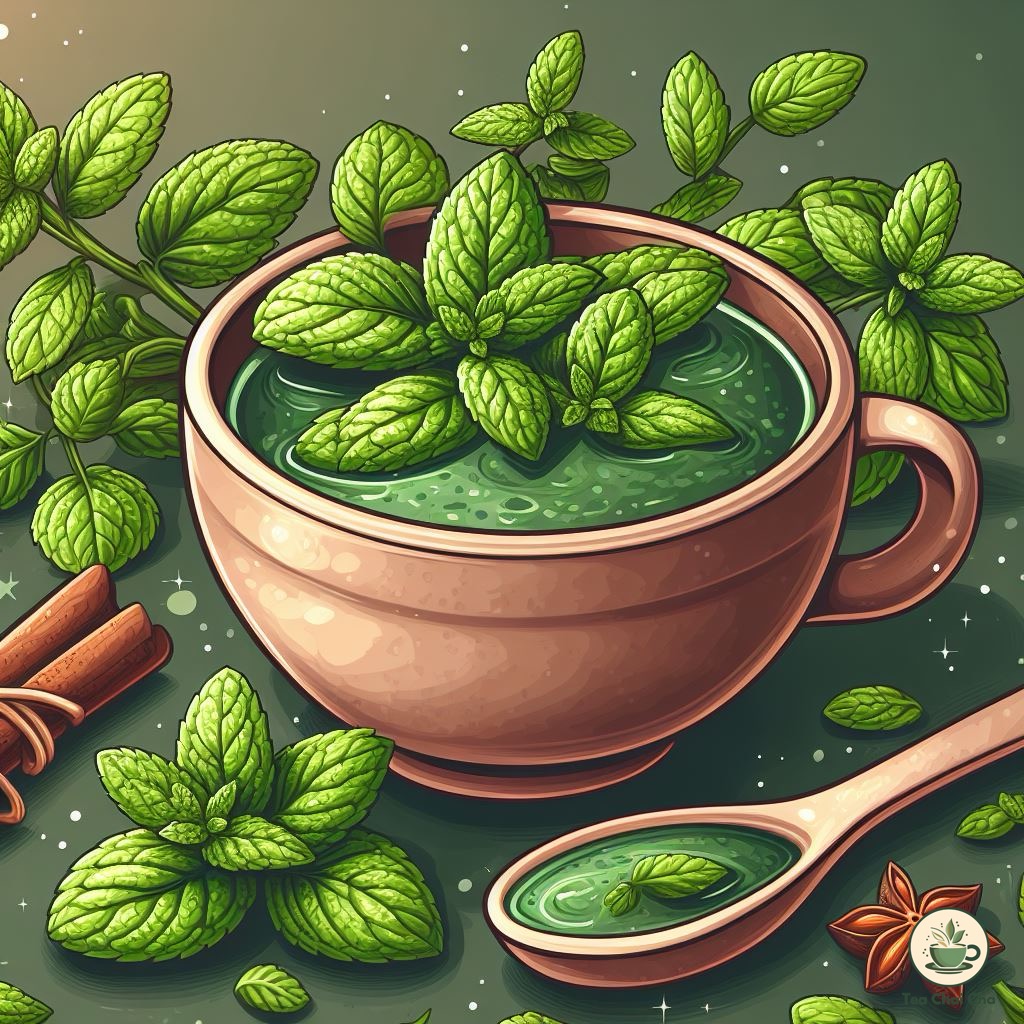
18. Mint Tea
- Origin: A combination of various mint leaves, such as peppermint and spearmint.
- Taste: Refreshing, cool, and slightly sweet.
- Characteristics: Often enjoyed for its digestive benefits and invigorating flavor.
Related – How to Make Mint Tea with Leaves, Teabags, Concentrate (Iced/Hot)
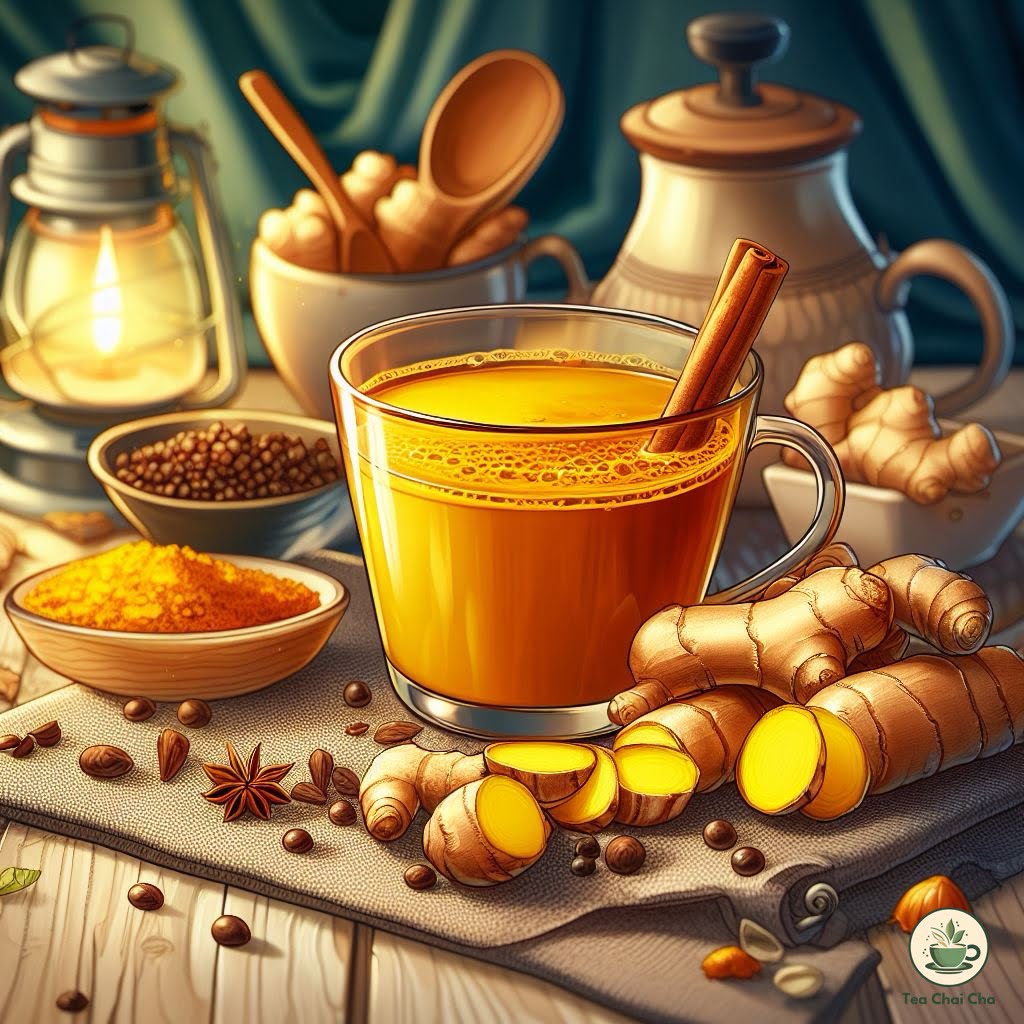
19. Turmeric Tea
- Origin: Made from the turmeric root, commonly used in Indian cuisine.
- Taste: Warm, earthy, and slightly spicy.
- Characteristics: Known for its potential anti-inflammatory properties and vibrant golden color.
Related – How to Make Turmeric Tea
20. Ginseng Tea
- Origin: Created from the ginseng plant’s root.
- Taste: Bitter and slightly earthy.
- Characteristics: Often consumed for potential energy-boosting and adaptogenic effects.
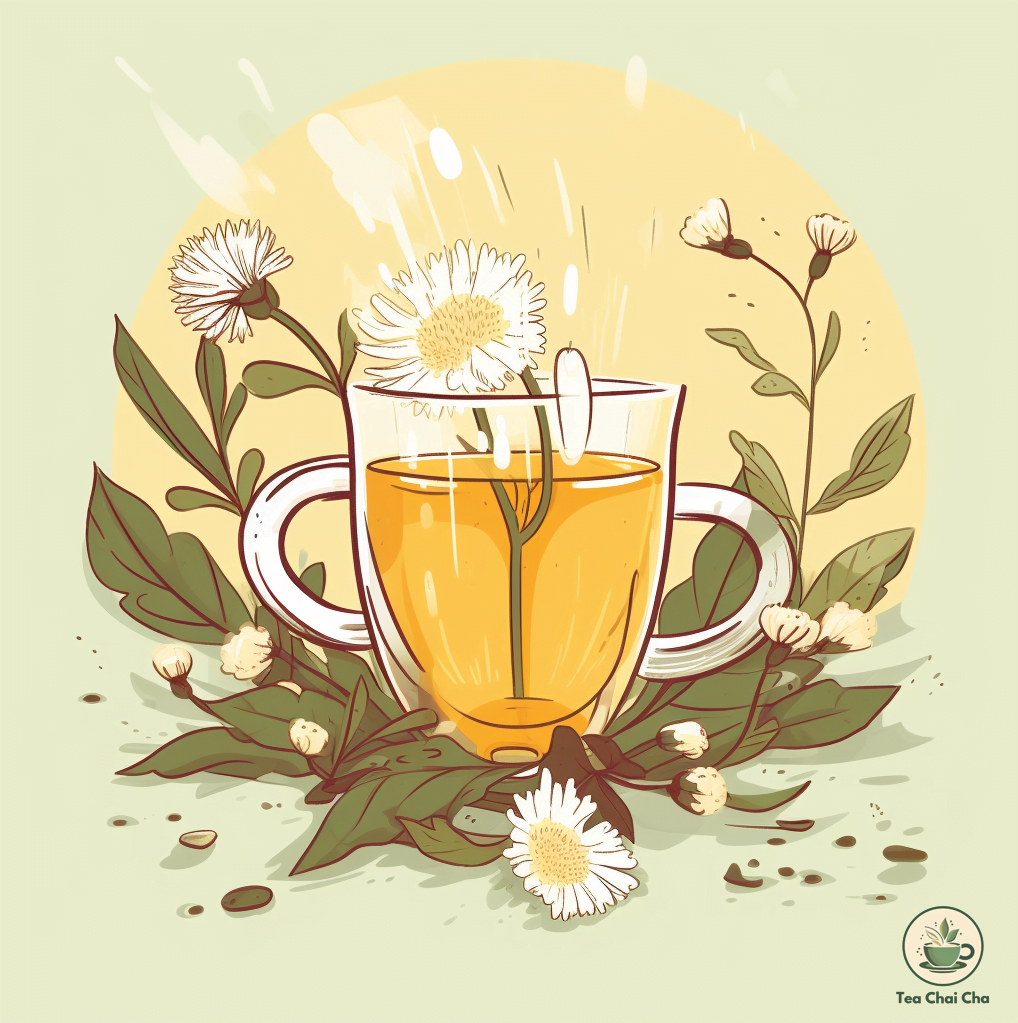
21. Dandelion Root Tea
- Origin: Made from roasted dandelion roots.
- Taste: Rich and nutty, with a hint of bitterness.
- Characteristics: Often enjoyed for its potential diuretic properties and support for liver health.
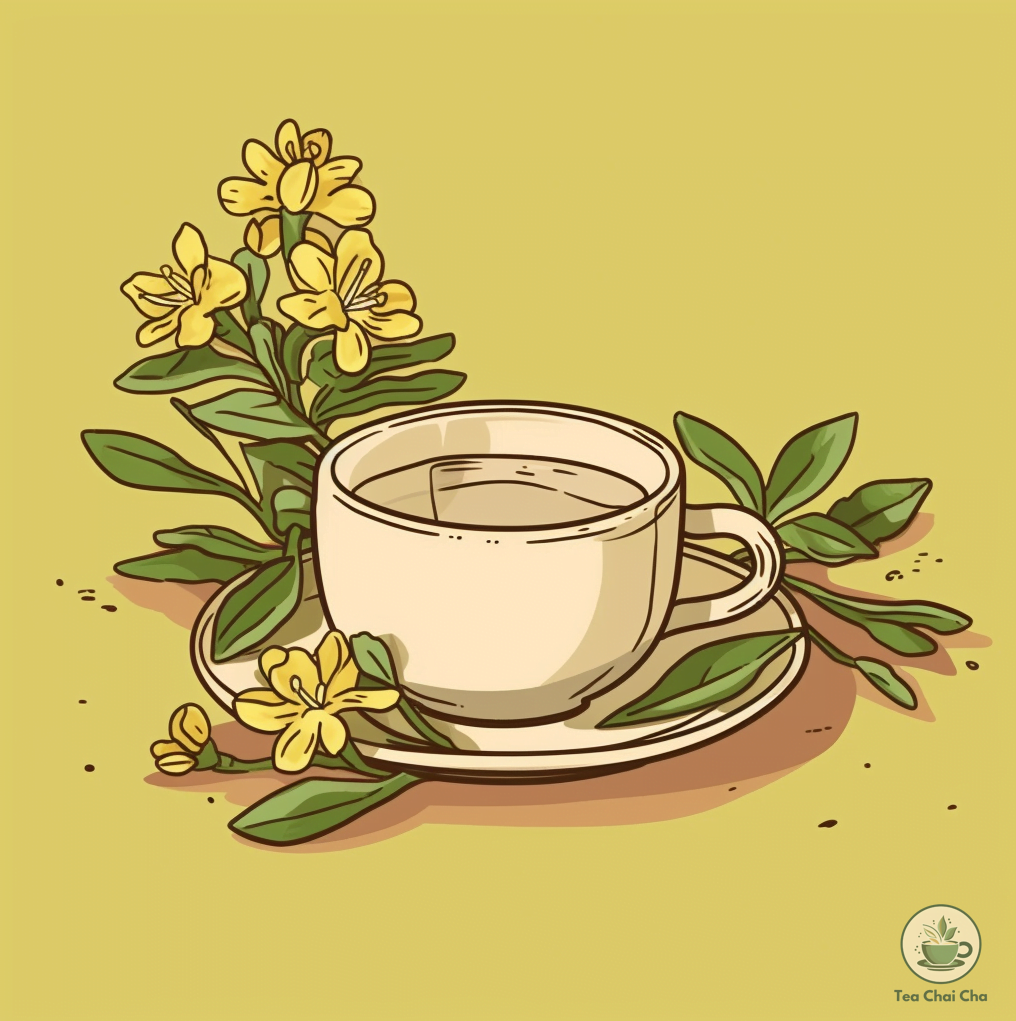
22. Senna Leaf Tea
- Origin: Derived from the senna plant’s leaves.
- Taste: Mild and slightly bitter.
- Characteristics: Often used for its potential laxative effects; should be consumed in moderation.
More Herbal Tea Recipes
Herbal Teas vs. True Teas
If you’re wondering which one might be the right choice for you, I’m here to help you understand the differences and make a decision that suits your preferences.
| Aspect | Herbal Teas | True Teas (Traditional Teas) |
| Source | Made from herbs, plants, and flowers other than tea leaves. | Made from the Camellia sinensis tea plant. |
| Caffeine Content | Naturally caffeine-free. | Contains caffeine (amount varies by type). |
| Flavor Variety | Wide range of flavors, from soothing to zesty, often with natural sweetness. | Unique flavors influenced by processing and origin. |
| Potential Benefits | Often associated with various health benefits, depending on the herbs used. | Contains antioxidants and may offer health benefits based on tea type. |
| Aroma and Taste | Diverse aromas and flavors, not limited by tea plant characteristics. | Distinctive tastes and aromas influenced by type and processing. |
| Caffeine Effects | Generally caffeine-free, suitable for evening or caffeine-sensitive individuals. | Contains caffeine, can provide a gentle energy boost. |
| Common Types | Chamomile, Peppermint, Rooibos, Hibiscus, etc. | Black, Green, White, Oolong, etc. |
| Popular Uses | Often chosen for relaxation, digestive support, and herbal remedies. | Enjoyed for traditional tea experiences and potential health benefits. |
Herbal Teas
Herbal teas are made from a variety of plants, flowers, and herbs.
They come in a wide range of flavors, from soothing chamomile to zesty peppermint.
The great thing about herbal teas is that they don’t contain any actual tea leaves, which means they’re naturally caffeine-free.
So, if you’re looking for a relaxing, caffeine-free option, herbal teas could be your go-to.
Plus, many herbal teas are known for their potential health benefits, like aiding digestion or promoting relaxation.
True Teas
True teas are your classic black, green, white, and oolong teas, which all come from the Camellia sinensis plant.
These teas do contain caffeine, but the levels can vary.
For example, black tea generally has more caffeine than green or white tea.
True teas have unique flavors and aromas influenced by factors like where they’re grown and how they’re processed.
If you’re into a bit of caffeine to give you a gentle boost, and you enjoy exploring different tea flavors, true teas might be your cup of tea!
Choosing What’s Right for You
To decide between herbal teas and true teas, consider your preferences and needs.
If you want to avoid caffeine or are looking for specific herbal benefits, herbal teas could be your choice.
On the other hand, if you enjoy the classic tea experience and don’t mind a bit of caffeine, true teas might be more your style.
How to Dry Herbs for Tea
Making tea with fresh herbs requires you to use 3 times more tea while it’s not the case with dried herbs.
Generally, you can make your herbal tea using 1 teaspoon of primary herb and 1/2 teaspoon of secondary herb, per cup of water.
But you can dry your herbs as well.
Drying herbs for tea is a simple and wonderful way to preserve their flavors and aromas.
Here’s how you can do it:
Step 1: Harvest Your Herbs
Choose a sunny morning to harvest your herbs, preferably after the dew has dried.
This is when the essential oils in the herbs are at their peak.
Gently cut or pinch off the healthy leaves and stems.
Step 2: Clean and Rinse
Give your harvested herbs a gentle rinse to remove any dirt or insects.
Pat them dry with a clean towel or let them air dry for a while.
Step 3: Choose Your Drying Method
There are a few ways to dry herbs:
Air Drying: Bundle a small bunch of herbs together and hang them upside down in a well-ventilated, dry area.
This method can take about 1-2 weeks.
Oven Drying: Place the herbs on a baking sheet in a single layer and put them in the oven at the lowest temperature setting (around 100-120°F or 37-49°C).
Keep the oven door slightly ajar. This method takes a few hours.
Dehydrator: If you have a food dehydrator, follow the manufacturer’s instructions for drying herbs.
This method is efficient and takes around 1-4 hours.
Step 4: Monitor Drying Progress
Check the herbs regularly to ensure they are drying properly and not becoming too brittle.
They should retain their color and most of their flavor.
Step 5: Store Your Dried Herbs
Once your herbs are completely dry, remove the leaves from the stems and store them in airtight containers.
Be sure to label each container with the herb’s name and the date of drying.
Step 6: Prepare Your Tea
When you’re ready to make tea, simply crumble or crush the dried leaves to release their flavor.
Use about 1-2 teaspoons of dried herbs per cup of hot water.
Extra Tips
1. Avoid Direct Sunlight: While air drying, place your herbs in a shaded area to prevent the sunlight from affecting their color and flavor.
2. Quick Drying: If you’re in a hurry, you can use a microwave on low power to dry small batches of herbs.
Be very cautious and monitor them closely to prevent burning.
3. Preserve Flavor: Dried herbs are best used within a year to preserve their flavor.
Over time, they might lose some potency.
4. Test the Dryness: Herbs are adequately dry when they crumble easily between your fingers.
If they still feel soft or contain moisture, they need more drying time.
How to Make Your Own Herbal Tea Blend
Making your own herbal tea blend can be a fun and rewarding experience.
Here’s a simple guide to help you get started:
Step 1: Choose Your Base Herb
Start by selecting a base herb for your tea blend.
This will be the main ingredient that sets the tone for your tea’s flavor.
Some popular options include:
- Peppermint: Refreshing and soothing, great for digestion.
- Chamomile: Calming and gentle, perfect for relaxation.
- Lemongrass: Citrusy and invigorating, adds a zesty twist.
- Lavender: Fragrant and relaxing, ideal for stress relief.
Step 2: Add Flavorful Herbs
Now, let’s enhance the flavor of your tea by adding complementary herbs.
You can choose one or a combination of these herbs:
- Lemon Verbena: Zingy and bright, brings a citrusy aroma.
- Rosemary: Earthy and aromatic, adds depth to the blend.
- Hibiscus: Tangy and vibrant, gives a rich, reddish color.
- Cinnamon: Warm and spicy, imparts a cozy flavor.
Step 3: Incorporate Some Sweetness
If you like your tea on the sweeter side, consider adding a touch of natural sweetness.
You can use:
- Stevia Leaves: A calorie-free option with a mild sweetness.
- Licorice Root: Sweet and soothing, great for balancing flavors.
- Dried Fruits: Like dried apple or orange peel, for a fruity sweetness.
Step 4: Experiment with Aromatics
Aromatics add delightful scents to your blend. You can try:
- Mint Leaves: Peppermint or spearmint, for a burst of freshness.
- Citrus Zest: Orange, lemon, or lime zest, adds a zesty aroma.
- Cardamom Pods: Warm and fragrant, perfect for a spiced tea.
Step 5: Mix and Match
Now comes the fun part!
Experiment with different combinations of your chosen herbs and flavors.
Start with small quantities until you find a blend that suits your taste.
Step 6: Storage
Once you’ve created your perfect blend, store it in an airtight container away from direct sunlight.
This will help preserve the flavors and aromas.
Step 7: Brewing Your Tea
To make your herbal tea, simply:
- Boil water and let it cool slightly.
- Add 1-2 teaspoons of your herbal tea blend to a tea infuser or teapot.
- Pour the hot water over the herbs.
- Let it steep for about 5-10 minutes, depending on your taste preferences.
- Enjoy your homemade herbal tea!
Remember, there’s no right or wrong way to create your own herbal tea blend.
It’s all about exploring flavors and finding combinations that make you happy.
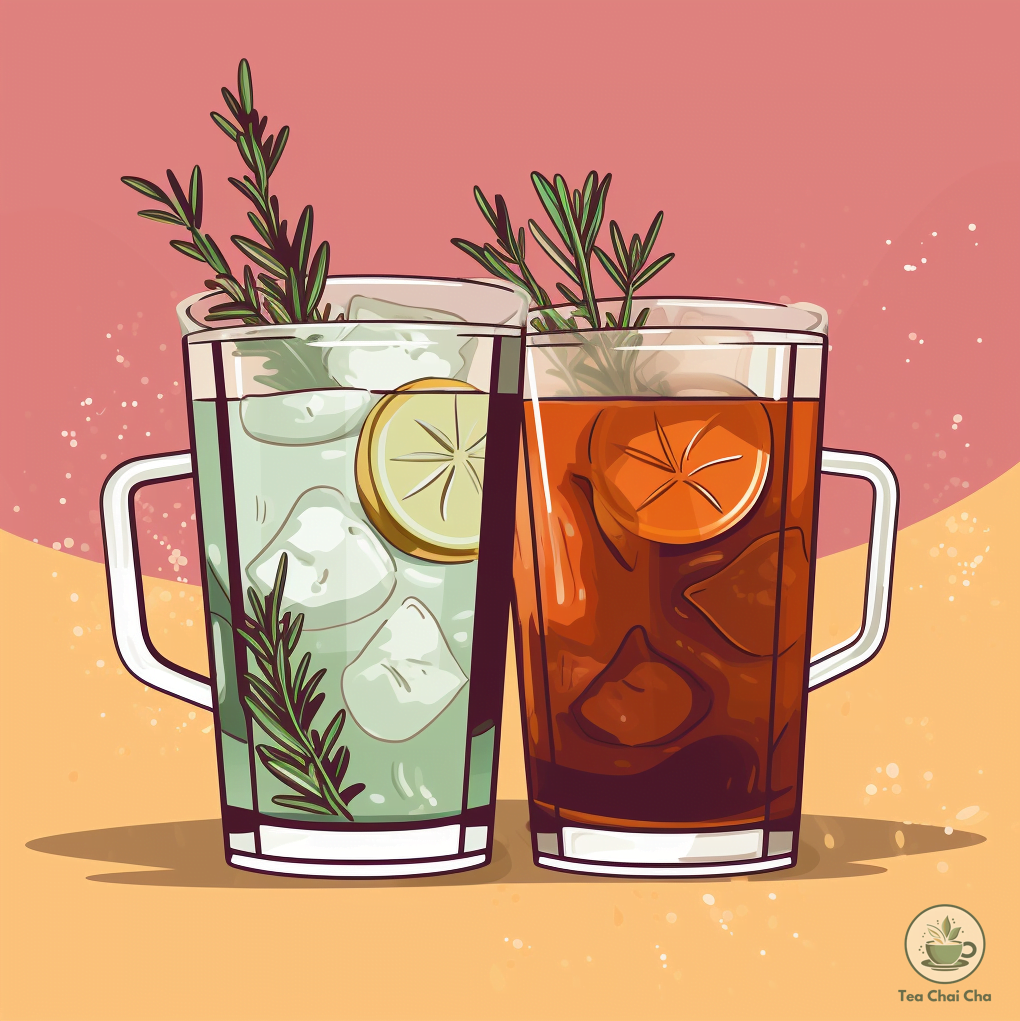
Herbal Teas Hot or Cold?
When it comes to herbal tea, there’s a delightful variety to choose from, each offering its own unique benefits and flavors.
Whether you’re sipping to warm up on a chilly day or to cool down during the heat, I’ve got some great suggestions for you!
Hot Herbal Teas
Chamomile Tea: If you’re looking for a soothing cup before bed or to relax after a long day, chamomile tea is a wonderful choice.
Its gentle, floral taste and calming properties can help you unwind.
Peppermint Tea: Feeling a bit under the weather?
Peppermint tea’s invigorating and minty flavor can help ease congestion and soothe your throat.
It’s like a cozy hug for your insides.
Ginger Tea: When you need a warming boost, ginger tea is your go-to.
It can help with digestion and provide a comforting, slightly spicy kick. Great for those chilly mornings!
Cold Herbal Teas
Hibiscus Tea: When the sun is blazing, hibiscus tea served over ice is a refreshing choice.
Its vibrant color and tangy-sweet taste are perfect for staying cool and hydrated.
Lemon Balm Tea: Looking for a gentle, lemony option?
Lemon balm tea is not only delicious, but it can also have a calming effect, making it a lovely choice for a relaxed summer afternoon.
Mint Tea (Iced): Peppermint or spearmint tea, when chilled, becomes an amazing thirst-quencher.
Its cool, crisp flavor is invigorating and ideal for combating the heat.
How to Make Iced Herbal Tea
you make delicious iced herbal tea, either by the iced or cold brew method.
Here are two simple ways to enjoy refreshing herbal tea:
Iced Herbal Tea (Traditional Method)
Ingredients
- Herbal tea bags or loose leaf herbal tea (2-3 tea bags or 2 tablespoons of loose tea)
- Water (4 cups)
- Sweetener (honey, sugar, or a natural sweetener, to taste)
- Lemon slices, mint leaves, or other garnishes (optional)
Instructions
- Boil 4 cups of water and let it cool for a minute.
- Put the herbal tea bags or loose tea in a heat-resistant pitcher.
- Pour the hot water over the tea bags or loose tea.
- Let the tea steep for about 5-7 minutes, depending on the herbal tea’s recommended steeping time.
- Remove the tea bags or strain the loose tea.
- Sweeten the tea with your desired sweetener while it’s still warm, stirring until it dissolves.
- Add ice cubes to the pitcher to cool the tea quickly.
- You can also add lemon slices or mint leaves for extra flavor.
- Put the pitcher in the fridge until chilled.
- Serve the iced herbal tea in glasses filled with ice and garnishes if desired.
Cold Brew Herbal Tea
Ingredients
- Herbal tea bags or loose leaf herbal tea (2-3 tea bags or 2 tablespoons of loose tea)
- Cold water (4 cups)
- Sweetener (optional)
- Citrus slices, berries, or herbs for added flavor (optional)
Instructions
- Place the herbal tea bags or loose tea in a pitcher.
- Pour 4 cups of cold water into the pitcher.
- Cover the pitcher and place it in the fridge.
- Let the tea steep in the cold water for 6-12 hours. You can leave it overnight for the best flavor.
- After steeping, remove the tea bags or strain the loose tea.
- Sweeten the cold brewed tea if desired.
- Add some citrus slices, berries, or herbs to enhance the taste.
- Pour the cold brew herbal tea into glasses filled with ice.
- You can garnish with extra fruits or herbs if you like.
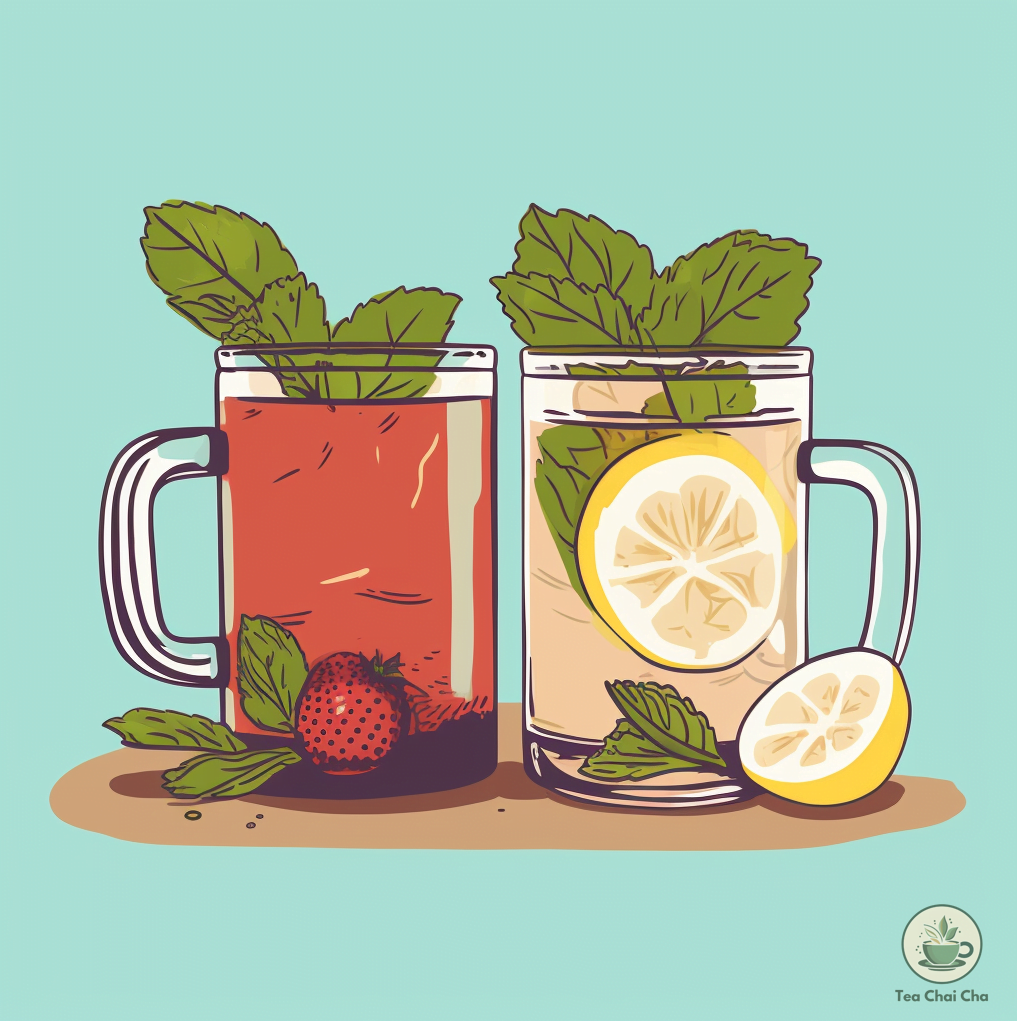
How to Choose Between Iced Tea and Cold Brew Herbal Tea?
The choice between the iced method and the cold brew method can depend on the type of herbal tea you’re using and the flavor profile you want to achieve.
Here’s a guide on when to use each method based on different herbal tea types:
Iced Method
Choose the iced method when you’re working with herbal teas that have robust or pronounced flavors, and you want a quicker infusion.
This method is great for herbal teas that:
1. Contain Woody or Spicy Ingredients
If your herbal tea contains ingredients like cinnamon, ginger, or cloves that have strong flavors, the hot water in the iced method can help extract their essence more effectively.
2. Herbs with Quick Steep Times
Some herbal teas have shorter steeping times, such as chamomile or peppermint.
The hot water in the iced method can help bring out their flavors in a shorter amount of time.
3. Floral and Delicate Teas
If your herbal tea has delicate floral notes, like hibiscus or rose, the traditional method can help capture their aroma and taste.
Cold Brew Method
Choose the cold brew method when you’re working with herbal teas that are more delicate, subtle, or have a tendency to become bitter when steeped in hot water.
This method is ideal for herbal teas that:
1. Contain Delicate Herbs and Flowers
If your herbal tea contains delicate ingredients like lavender, jasmine, or chamomile, cold brewing can prevent them from becoming overly bitter or losing their delicate aromas.
2. Fruity and Citrusy Teas
Herbal teas with fruity or citrusy flavors, such as citrus peels or berries, can work well with cold brewing, as it helps to maintain their refreshing and vibrant taste.
3. Minimize Bitterness
Cold brewing generally results in a smoother and less bitter tea.
If you want to avoid any bitterness that can arise from hot water steeping, the cold brew method is a good choice.
Factors That Affect the Flavor of Herbal Tea
If you’re like me and enjoy sipping on a soothing cup of herbal tea, you might be curious about what makes each cup taste so unique.
Well, wonder no more!
Let’s dive into the factors that influence the flavors of our favorite herbal brews.
1. Type of Herb
The type of herb you choose plays a major role in the flavor of your tea. Each herb has its own distinct taste profile.
For instance, chamomile brings a gentle, floral flavor, while peppermint offers a refreshing and minty taste.
So, when picking your herbs, think about the flavor you’re in the mood for.
2. Growing Conditions
Just like plants in a garden, herbs used for tea can be affected by where and how they’re grown.
The soil, climate, and altitude all contribute to the taste.
Tea made from herbs grown in a sunny region might have a more robust flavor compared to those grown in cooler areas.
3. Harvesting Time
When the herbs are harvested matters too.
Some herbs are best when picked young and tender, while others develop richer flavors as they mature.
For example, young nettle leaves offer a mild taste, whereas older ones might bring a more intense earthy flavor.
So, consider the harvest time for the flavor you desire.
4. Processing Methods
The way herbs are processed after harvesting can greatly impact their flavor.
Drying, crushing, and even fermenting can change the taste.
Some teas are intentionally oxidized to enhance their flavors, like with chamomile.
Others, like mint, are often used fresh for a zingy taste.
So, keep in mind how the herbs have been treated before they reach your cup.
5. Blending and Pairing
Mixing different herbs together can create exciting flavor combinations.
Blending chamomile with lavender, for example, offers a calming and fragrant cup.
Pairing citrusy herbs like lemongrass with spicy ginger can give a warming and invigorating taste.
So, get creative and experiment with your blends!
6. Steeping Time and Temperature
The way you brew your tea matters!
Steeping time and temperature can affect how much flavor is extracted.
Some herbs might turn bitter if steeped too long or at high temperatures.
Generally, a shorter steeping time with slightly cooler water works well for most herbal teas.
Adjust these factors to get the taste you enjoy.
How to Make Herbal Tea Taste Good
When it comes to enhancing the flavor of herbal tea, there are a variety of options that can turn a plain cup into a delightful experience.
Here are some ways to make your herbal tea taste better:
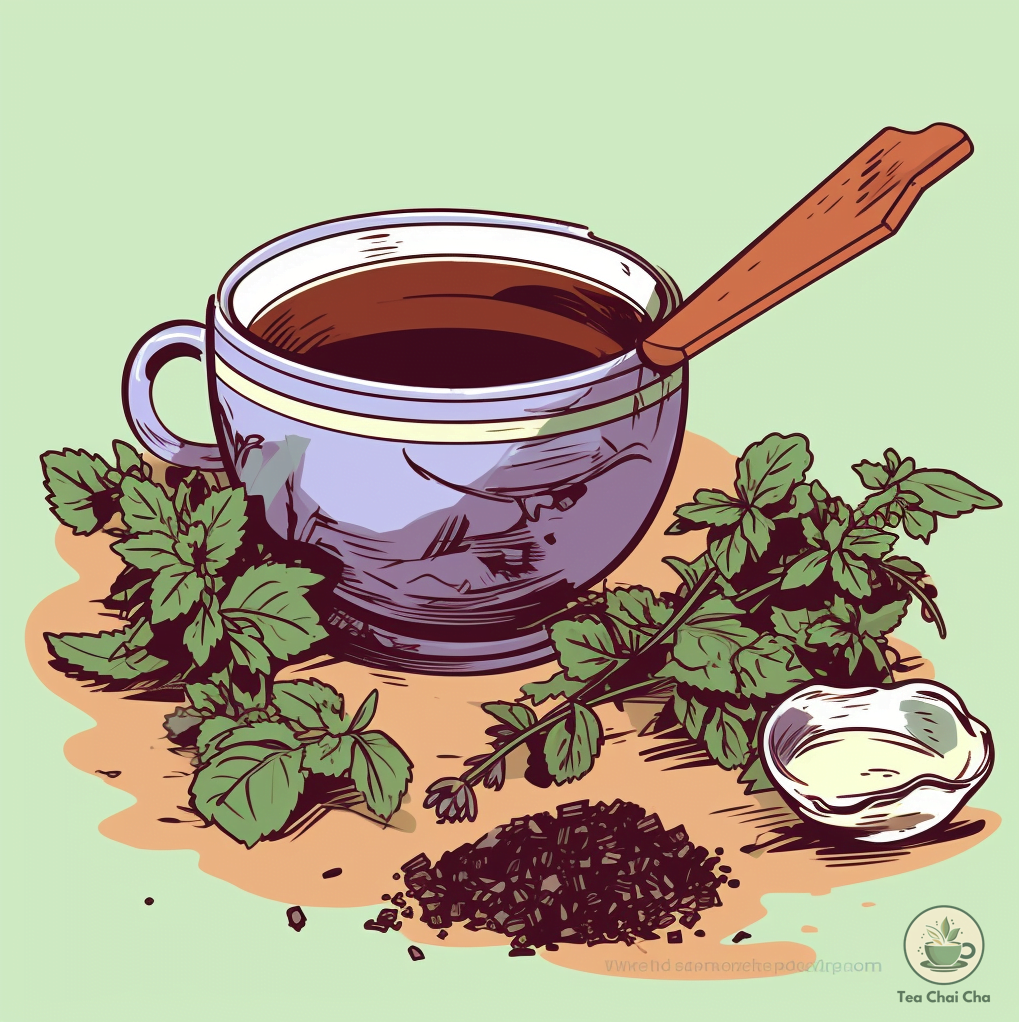
1. Sweeteners
Adding a touch of sweetness can elevate your herbal tea’s flavor. Honey, maple syrup, and stevia are great options.
I find that milder herbs like chamomile and lavender pair well with honey, while stronger flavors like peppermint blend nicely with a touch of maple syrup.
2. Milk or Milk Alternatives
For a creamy twist, consider adding a splash of milk or a dairy-free alternative like almond or coconut milk.
Creaminess can complement earthy herbs such as rooibos or turmeric.
Just a small amount can create a soothing texture and mellow out bolder flavors.

3. Fruits
Fresh or dried fruits can infuse your herbal tea with vibrant flavors.
Citrus fruits like orange slices can add zing to hibiscus tea, while berries can enhance the taste of floral herbs like rosehip.
Experiment with combinations that suit your taste buds!
4. Herb Blends
Don’t be afraid to mix different herbs to create your own unique blend.
Combining mint with lemongrass can be incredibly refreshing, and a mix of chamomile and lavender provides a soothing, calming effect.
Trust your instincts and let your palate guide you.
5. Spices
Spices like cinnamon, ginger, and cardamom can add warmth and depth to your herbal tea.
They work wonders with herbal chai or ginger tea.
These spices create a cozy and inviting aroma that’s perfect for a chilly day.
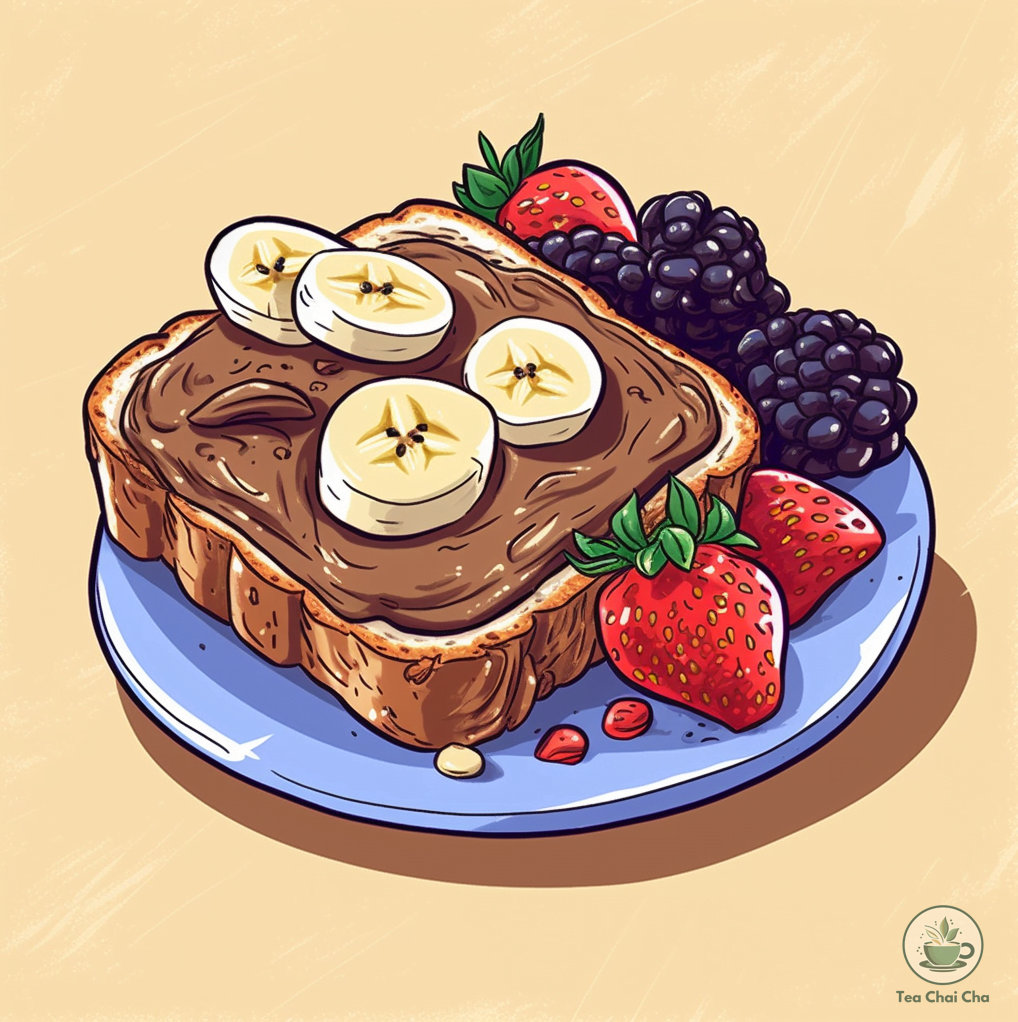
Herbal Tea Food Pairing
Let’s explore some delicious herbal tea options and their perfect food pairings to enhance your tea-drinking experience!
1. Chamomile Tea
If you’re sipping on a soothing cup of chamomile tea, consider pairing it with light and delicate treats like honey drizzled toast or buttery shortbread cookies.
The gentle floral notes of chamomile complement these flavors wonderfully.
2. Peppermint Tea
When enjoying refreshing peppermint tea, I love to pair it with fresh fruit salads or dark chocolate.
The minty coolness of the tea contrasts delightfully with the sweetness of fruits or the richness of chocolate.
3. Lemon Ginger Tea
For zesty lemon ginger tea, try matching it with a slice of lemon pound cake or a ginger-spiced biscuit.
The zingy citrus and warm ginger in the tea harmonize beautifully with these baked goods.
4. Lavender Tea
Lavender tea’s aromatic nature calls for companions like light lavender-infused cookies or a simple cucumber sandwich. These light bites echo the floral essence of the tea, creating a delightful pairing.
5. Hibiscus Tea
When enjoying tart hibiscus tea, I find that pairing it with a fresh green salad or a piece of grilled chicken works wonders.
The tea’s tanginess complements the freshness of the salad or the savory notes of the chicken.
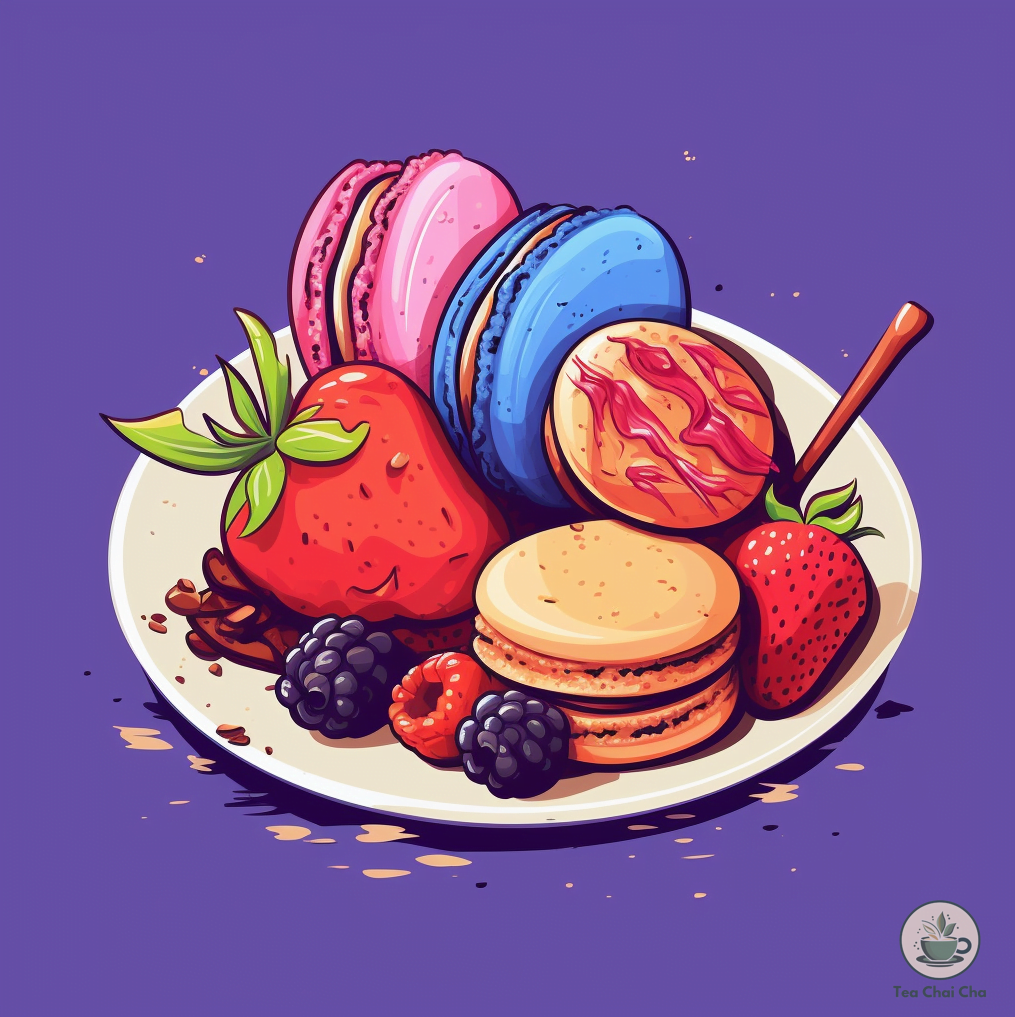
6. Rooibos Tea
Rich and earthy rooibos tea is a great match for nutty desserts like almond cookies or a slice of pecan pie.
The nutty flavors in both the tea and the treats create a comforting combination.
7. Mint-Lemongrass Tea
Pair this invigorating tea with spicy foods like Thai curry or a bowl of salsa and tortilla chips.
The mint and lemongrass in the tea help balance out the heat and provide a refreshing contrast.
8. Berry Infusion Tea
When enjoying a berry-infused herbal tea, think about pairing it with a bowl of mixed berries topped with yogurt or a berry muffin.
The fruity notes in the tea complement the juicy sweetness of the berries.
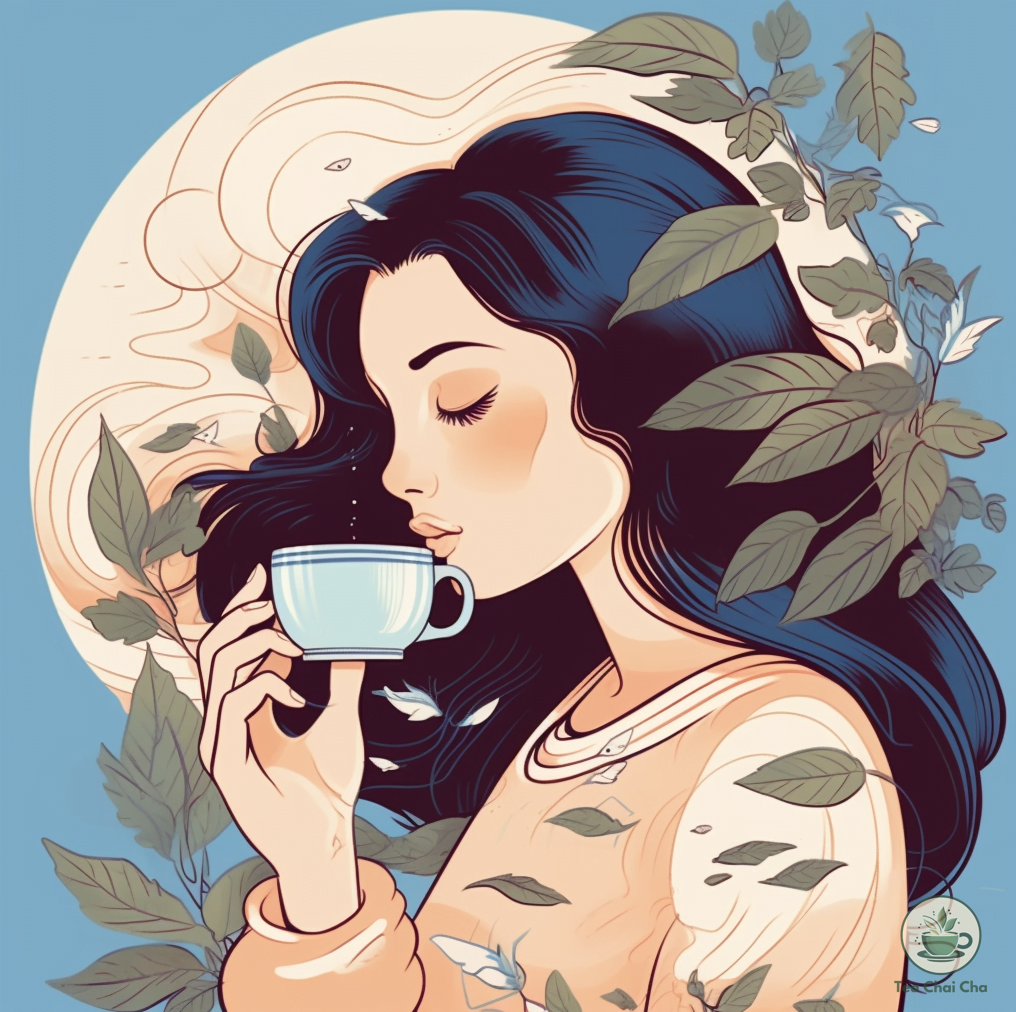
When to Drink Herbal Tea
Herbal tea is a soothing and delightful beverage that can be enjoyed at various times throughout the day.
Here are some suggestions to help you choose the perfect moments for sipping on herbal goodness.
1. Morning Wake-Up
Starting your day with a cup of herbal tea can be a gentle way to wake up your senses.
Opt for teas like peppermint or ginger to invigorate your body and mind.
They’re naturally caffeine-free, giving you a refreshing start without the jitters.
2. Midday Pick-Me-Up
Feeling a bit sluggish in the afternoon? Herbal tea can provide a light energy boost without the caffeine crash.
Try blends with ginseng or lemongrass for a revitalizing effect that won’t interfere with your sleep later on.
3. Relaxation Time
Evenings are a perfect opportunity to unwind with a calming cup of herbal tea.
Chamomile, lavender, and valerian root are known for their soothing properties.
They can help you de-stress after a long day and prepare your body for a restful night’s sleep.
4. Digestive Aid
Certain herbal teas, such as peppermint, ginger, and fennel, can be beneficial after meals.
They can aid in digestion and ease any discomfort. Enjoy a cup about 30 minutes after eating for a soothing effect.
5. Hydration Helper
Herbal teas are a great way to increase your fluid intake, especially if you’re not a fan of plain water.
You can enjoy them throughout the day to stay hydrated while enjoying delicious flavors.
6. Cold and Flu Support
When you’re feeling under the weather, herbal teas like echinacea, elderberry, and thyme can offer immune-boosting benefits.
They might help you feel a bit better while providing warmth and comfort.
Related to Tea Making

Herbal Tea Recipe
Recipe by Tania FaysalCourse: DrinksCuisine: Other world cuisine2
servings2
minutes10
minutes12
minutesThis recipe mentions the general process that you can follow to make herbal tea using any herbal blend.
Ingredients
1 tablespoon dried chamomile flowers (or your chosen herb)
1 tablespoon dried peppermint leaves (or your chosen herb)
1 teaspoon dried lemon verbena leaves (optional, or your chosen herb)
2 cups water
Honey or lemon (optional, for flavor)
Directions
- In a teapot or heat-resistant container, combine the dried chamomile flowers, dried peppermint leaves, and dried lemon verbena leaves if using. Alternatively, use your chosen combination of dried herbs.
- Bring 2 cups of water to a boil.
- Pour the boiling water over the dried herbs in the teapot.
- Cover the teapot and let the herbs steep in the hot water for about 5-10 minutes, depending on how strong you like your tea. For optimal results, aim for a water temperature of around 200°F (93°C) for most herbs. Use slightly cooler water for more delicate herbs like chamomile.
- After steeping, strain the tea into cups using a fine mesh strainer or tea infuser.
- If desired, add a drizzle of honey or a squeeze of lemon to enhance the flavor.
- Give the tea a gentle stir and enjoy your customized herbal tea creation!
Recipe Video
Notes
- You can customize this herbal tea recipe by using your favorite herbs or a combination of herbs. The process remains the same regardless of the herbs you choose.
- Feel free to experiment and create unique flavor blends that match your taste preferences.
- The video I attached is for reference only. You can have an idea from it on how to prepare your herbs for a cup of tea.
Frequently Asked Questions (FAQs)
What does herbal tea taste like?
Herbal tea tastes quite different depending on the herbs used. Some herbal teas can be soothing and mild, with flavors like chamomile or mint.
Others might be more robust, like hibiscus or ginger, offering a tangy or spicy taste. Fruity herbal teas, like berry blends, can be sweet and refreshing. It’s all about personal preference!
Does herbal tea have caffeine?
No, most herbal teas do not contain caffeine. Unlike traditional teas like black, green, or white tea, herbal teas are often caffeine-free. This can make them a good choice if you’re looking to avoid caffeine.
Is herbal tea real?
Yes, herbal tea is real! It’s made by steeping various herbs, flowers, fruits, or spices in hot water.
However, some people argue that the term “tea” should only refer to beverages made from the Camellia sinensis plant, which includes black, green, white, and oolong teas.
Herbal teas are sometimes called “tisanes” to distinguish them from traditional teas.
How many calories are in herbal tea?
Herbal teas are usually very low in calories, often containing zero calories.
This is because they are made by infusing the flavors of herbs or fruits in hot water, which doesn’t add significant calories to the drink. However, if you add sweeteners like honey or sugar, the calorie count will go up.
